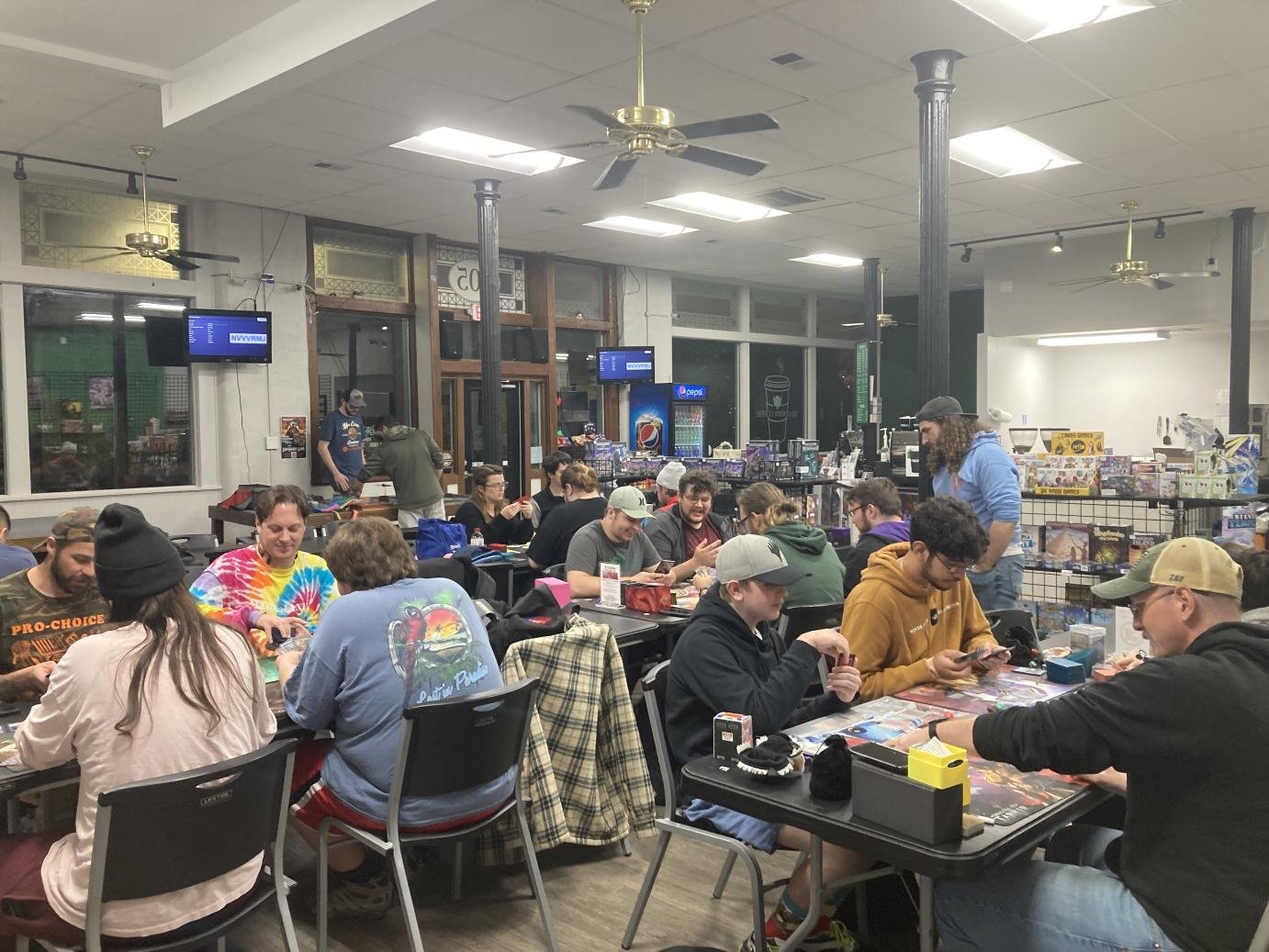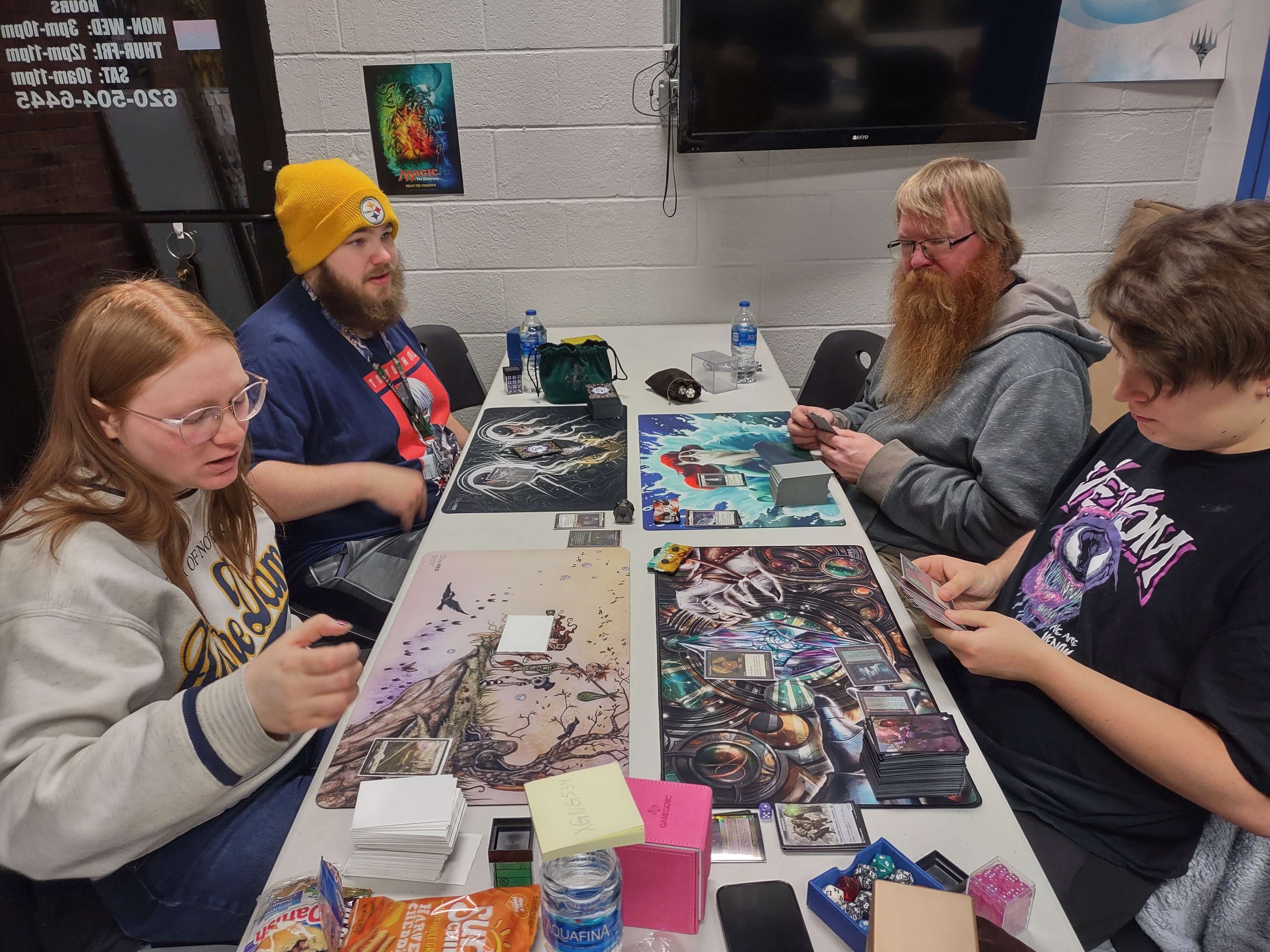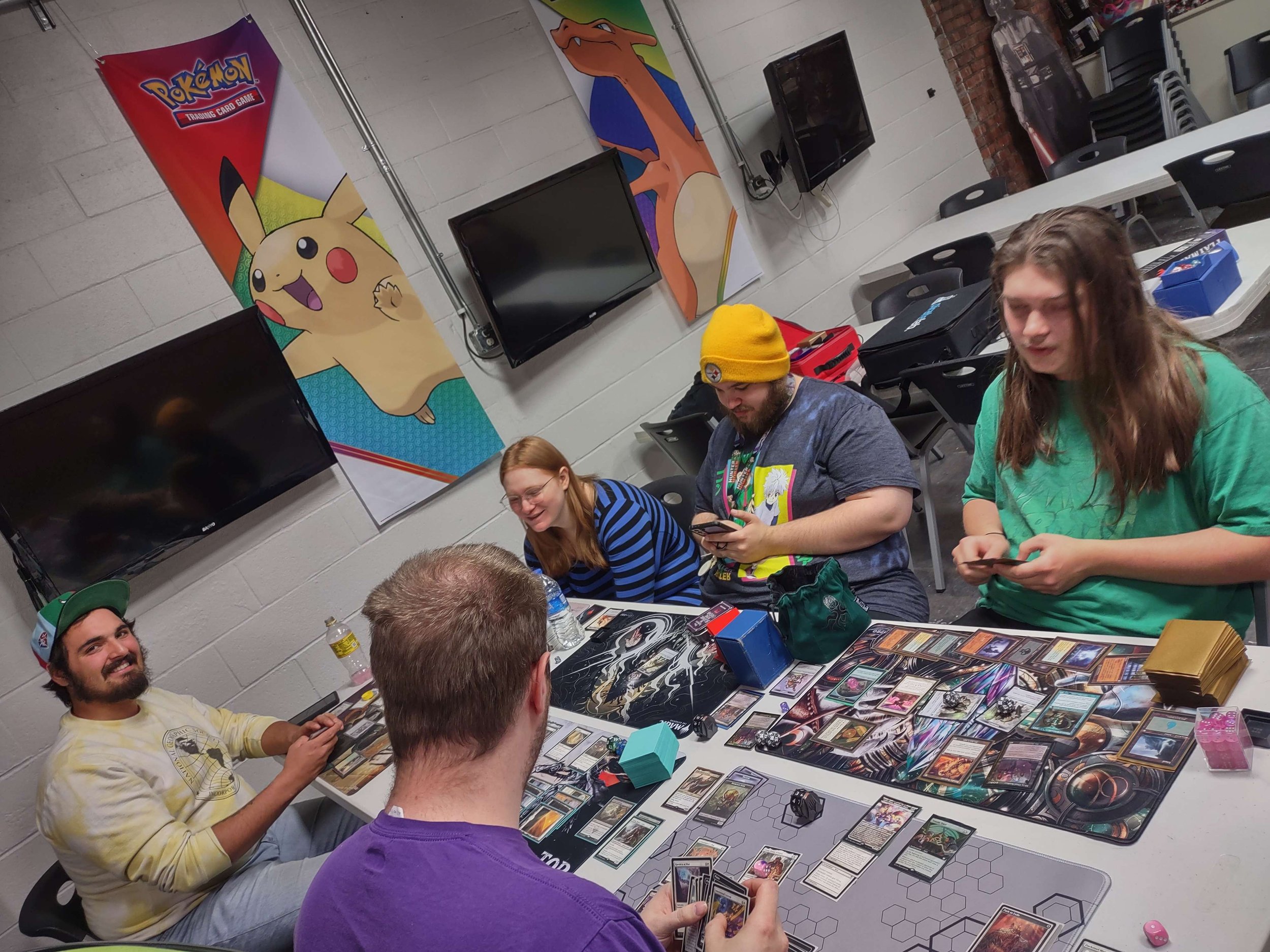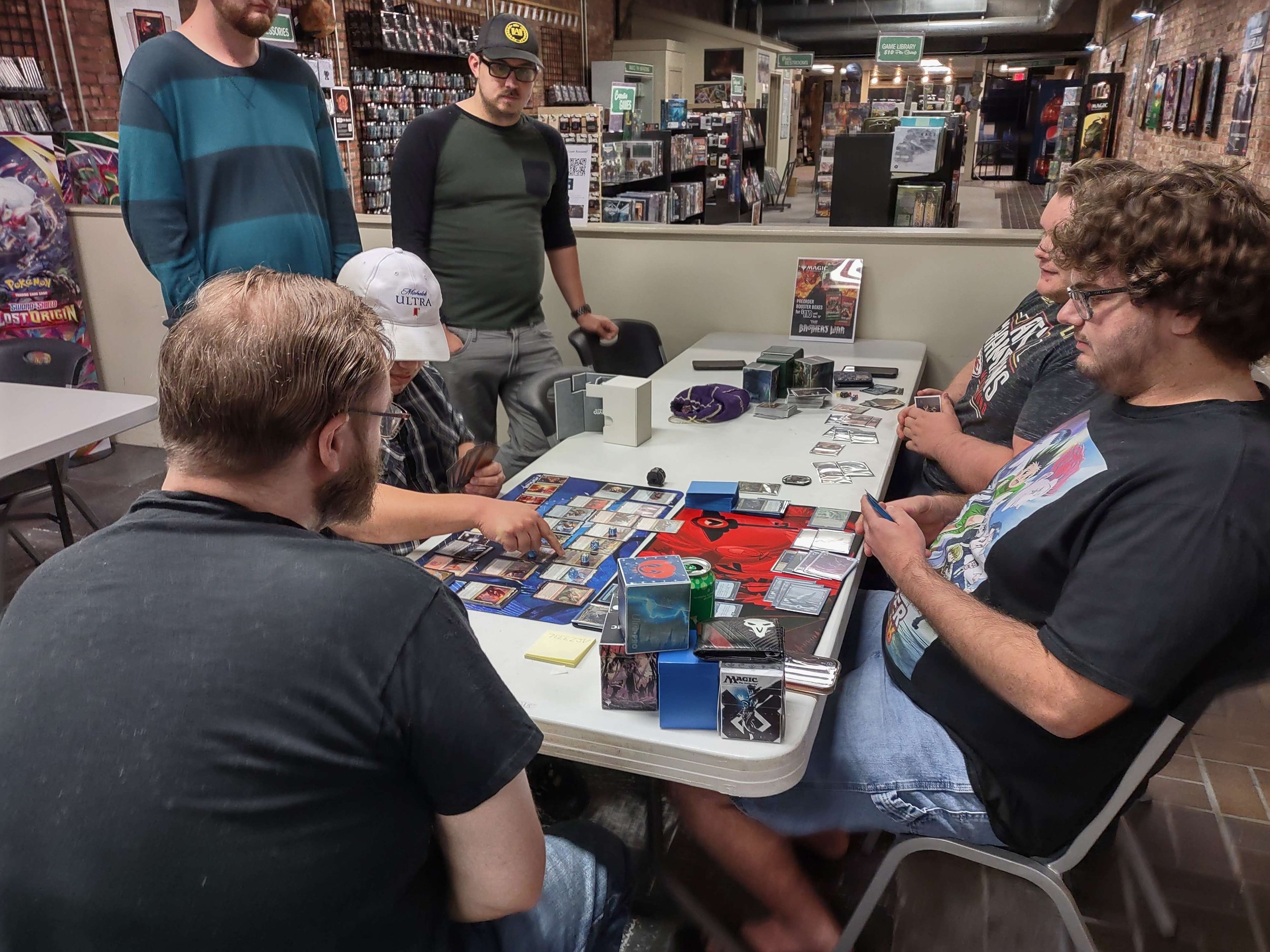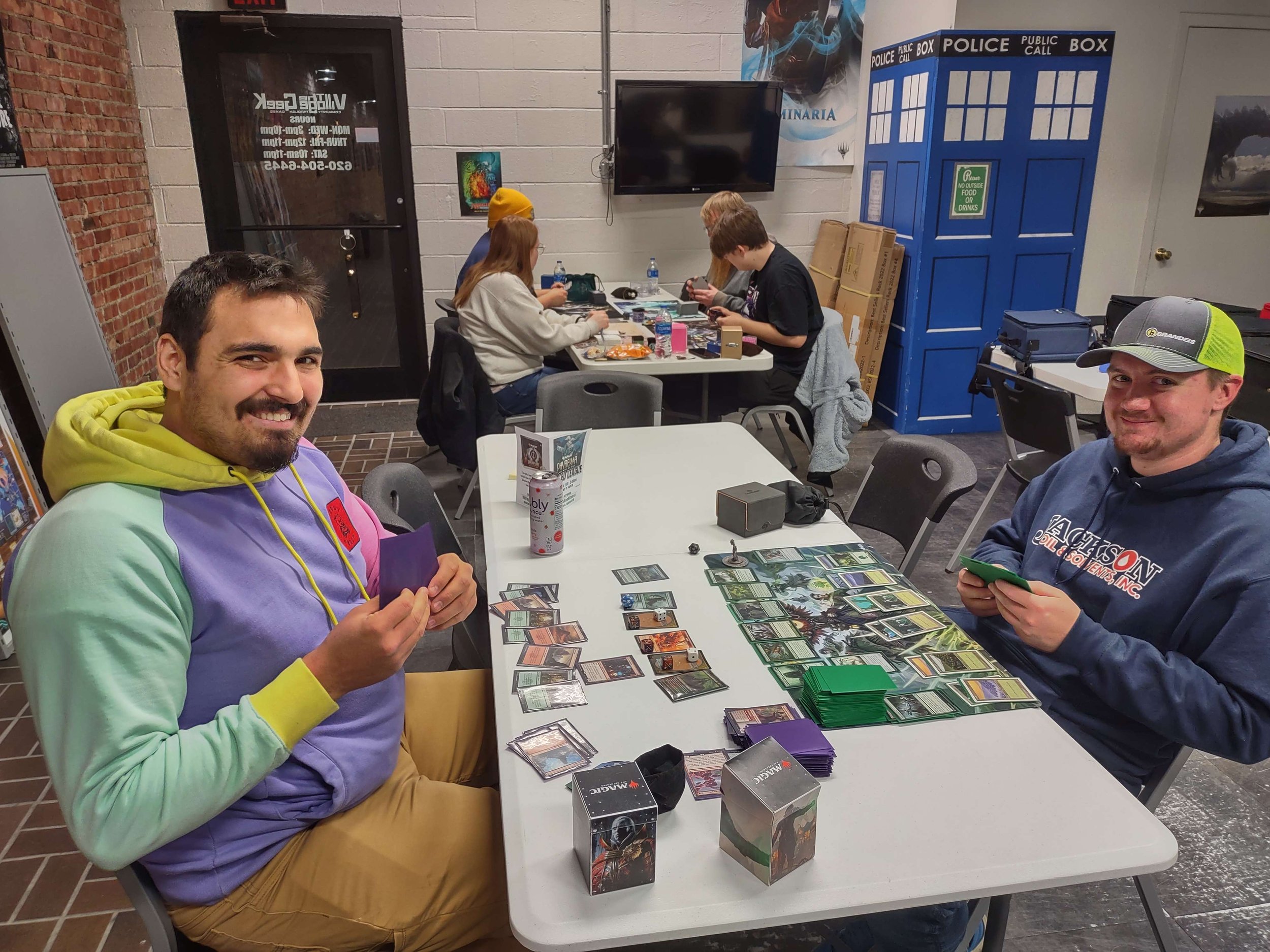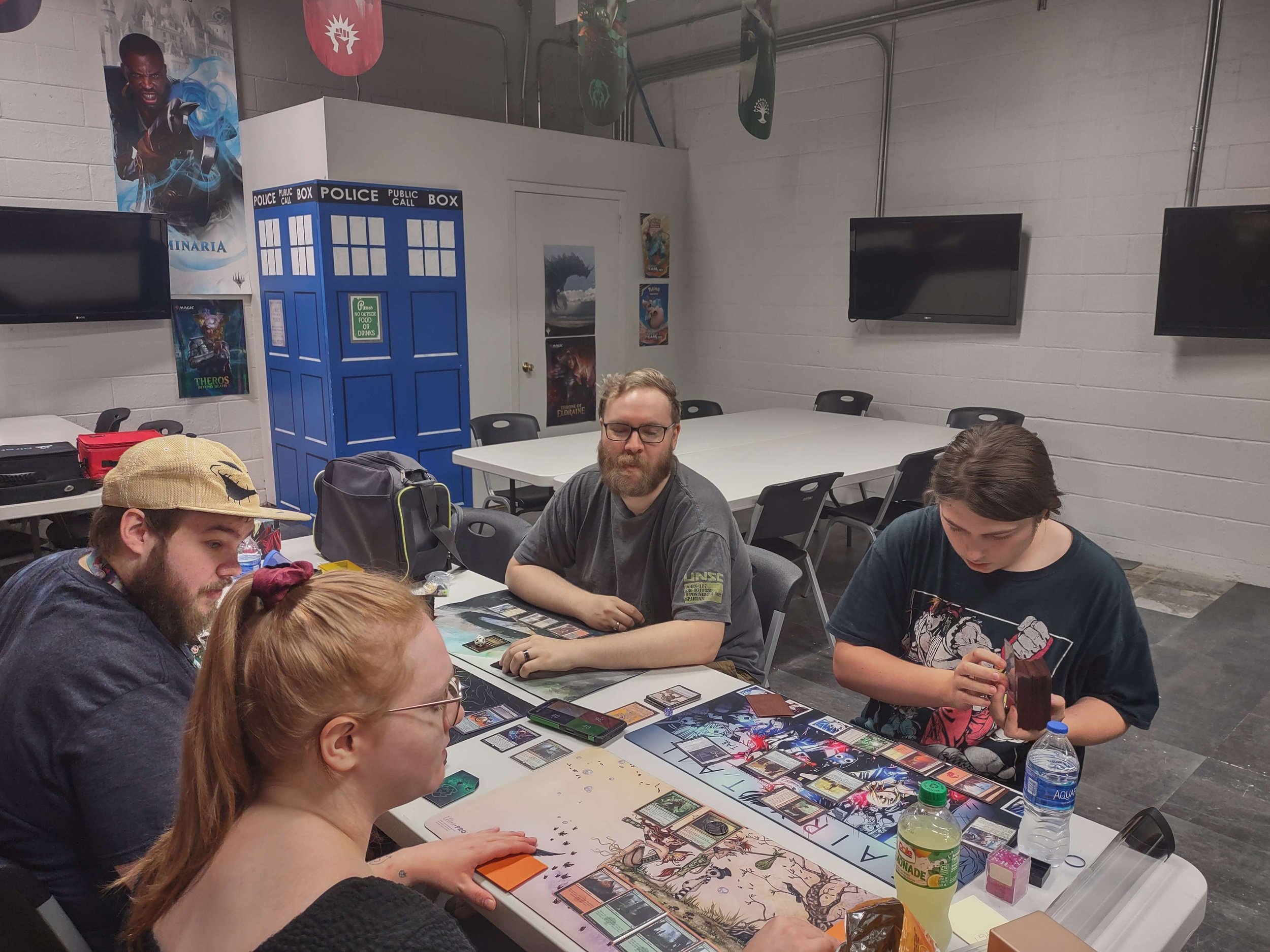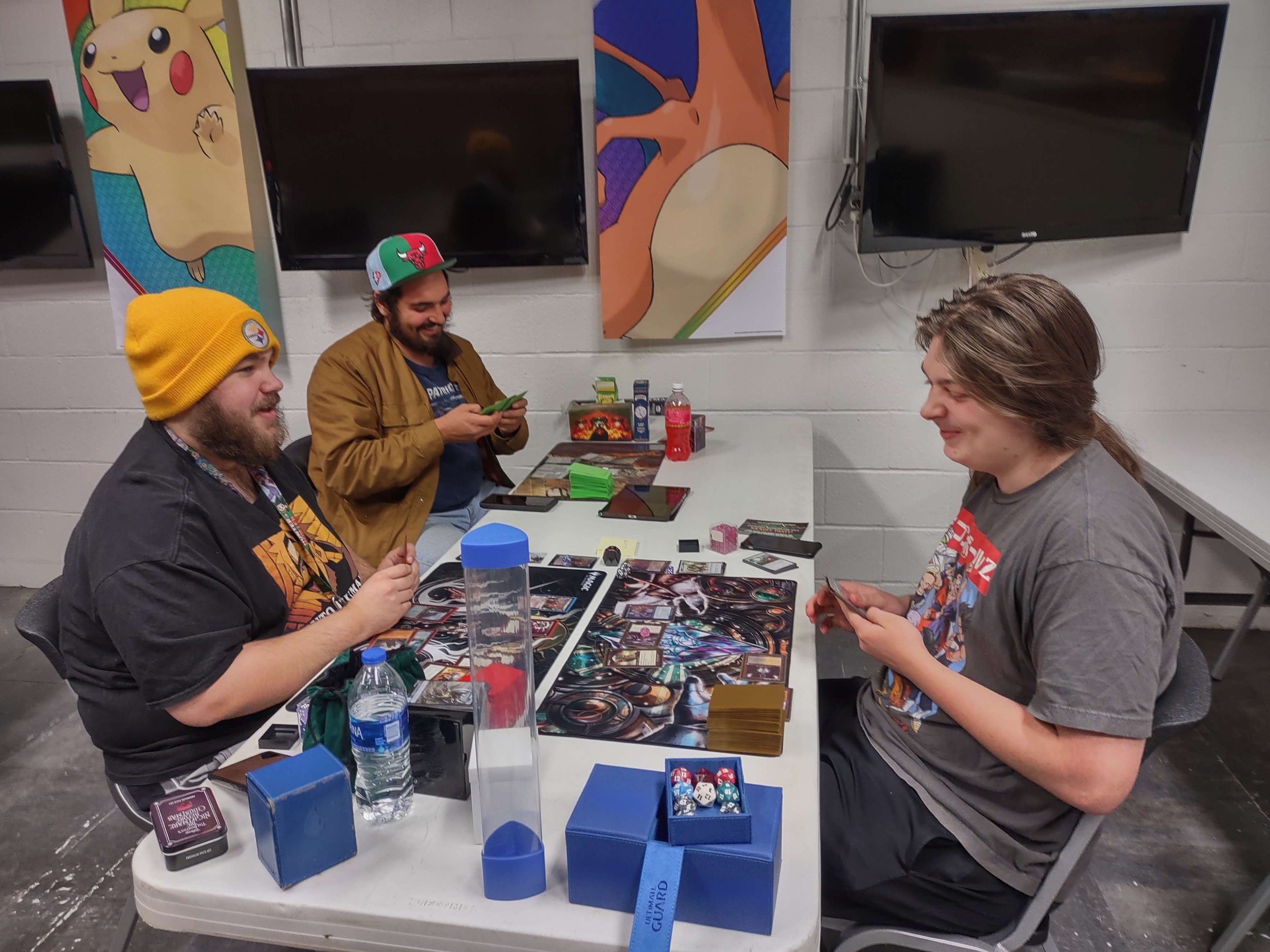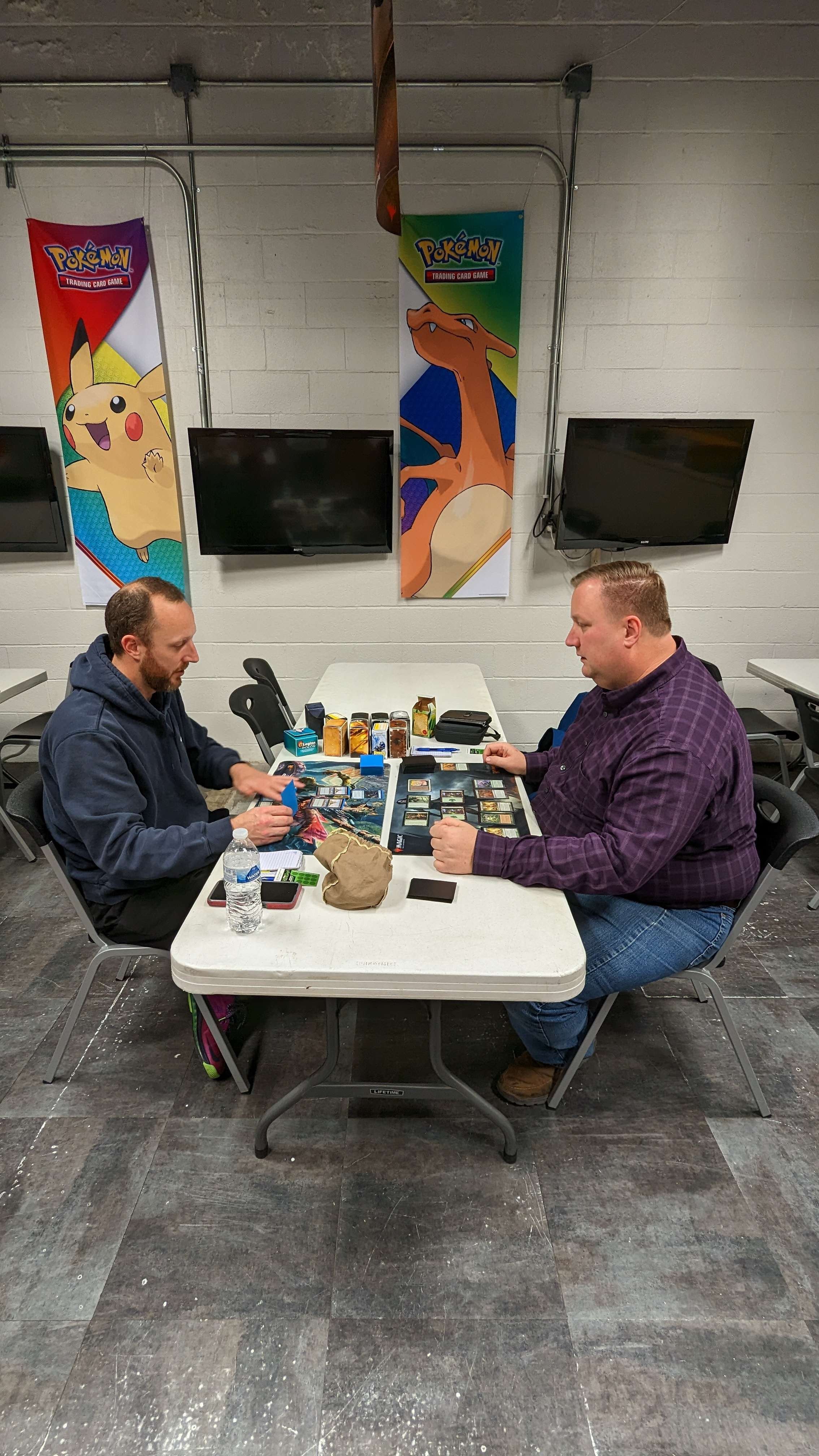Magic the Gathering
Magic the Gathering is a trading card game filled with strategic battles and unique card decks. Magic can be played as casually or as intensely competitive as you’d like.
A player’s deck consists of at least 40 cards. That deck can contain creatures to summon to attack your opponent, enhancements for those creatures, direct magical attacks to your opponent or their creatures, and land cards that provide the necessary energy to bring those cards into play.
Magic the Gathering cards come in pre-constructed decks and randomized booster packs. Some cards are very common in those booster packs and some are very rare. Magic the Gathering has been in production since the early 1990s, with core sets and themed sets released every few months.
There are several official styles of play, some restricting the card pool to recent releases or a card’s rarity and some allowing almost every card ever produced. You can read about the different formats at the bottom of this page.
The Village Geek hosts many different Magic events every week as well as prerelease events, booster draft events, and tournaments.
Magic Formats
Modern format
These are one-on-one games with 60 card minimums for the main deck (up to 15 card sideboard). Modern games should last average length for a game (about 20 minutes).
With the exception of basic lands (Plains, Island, Swamp, Mountain, Forest, and Wastes), your combined deck and sideboard may not contain more than four of any individual card, counted by its English card title equivalent. This format includes powerful cards and strategies from the last two decades (since 8th edition and onwards).
Legacy format
As a constructed format, Legacy does not rotate and allows cards to be played from all Magic sets (with the exception of those from the banned card list). Your deck and sideboard is not allowed to hold more than four of any individual card in this format, except for basic lands.
Minimum deck size of 60 cards
Up to 15 cards in your sideboard (if used)
Commander format
This format is for four players per game and deck sizes are 99 cards + 1 commander card. The game duration for this format should be about 20 minutes per player.
Read more about the Commander format on the official Magic website.
Standard format
Standard games are one-on-one with a 60 card minimum for the main deck (up to 15 card sideboard). Winner is determined either by best of one, or best of three games. These games should last standard length for a game (about 20 minutes on average).
Standard is a dynamic format where you build decks and play using cards in your collection from recently released Magic sets. This means older cards will be phased out. Visit the official Magic website to see what sets are currently legal in Standard.
Evolving gameplay and fresh strategies make it one of the most fun and popular ways to play Magic.
Booster draft
A format for up to 8 players to open card packs, then play one-on-one games on the spot! Each deck should have at least 40 cards and should last an average length for a game (about 20 minutes).
How to draft: First, players sit around a table in a semi-circle. Each player then opens a booster pack and picks a single card without showing the other players.
Each player then passes the remaining cards to the left, and continues drafting from the new cards they get from the player on their right. This continues until all of the cards in those packs have been distributed (drafted). Then each player opens a second pack, but this time, pass the pack to the right. After all those cards are drafted, you do the same with the third pack, passing to the left again. At the end, each player will have about 45 cards (along with any number of basic lands) which they can use to build a 40 card deck.
Other formats
Visit the official Magic site to read about Sealed Deck, Pauper, Two-Headed Giant, and other formats.
